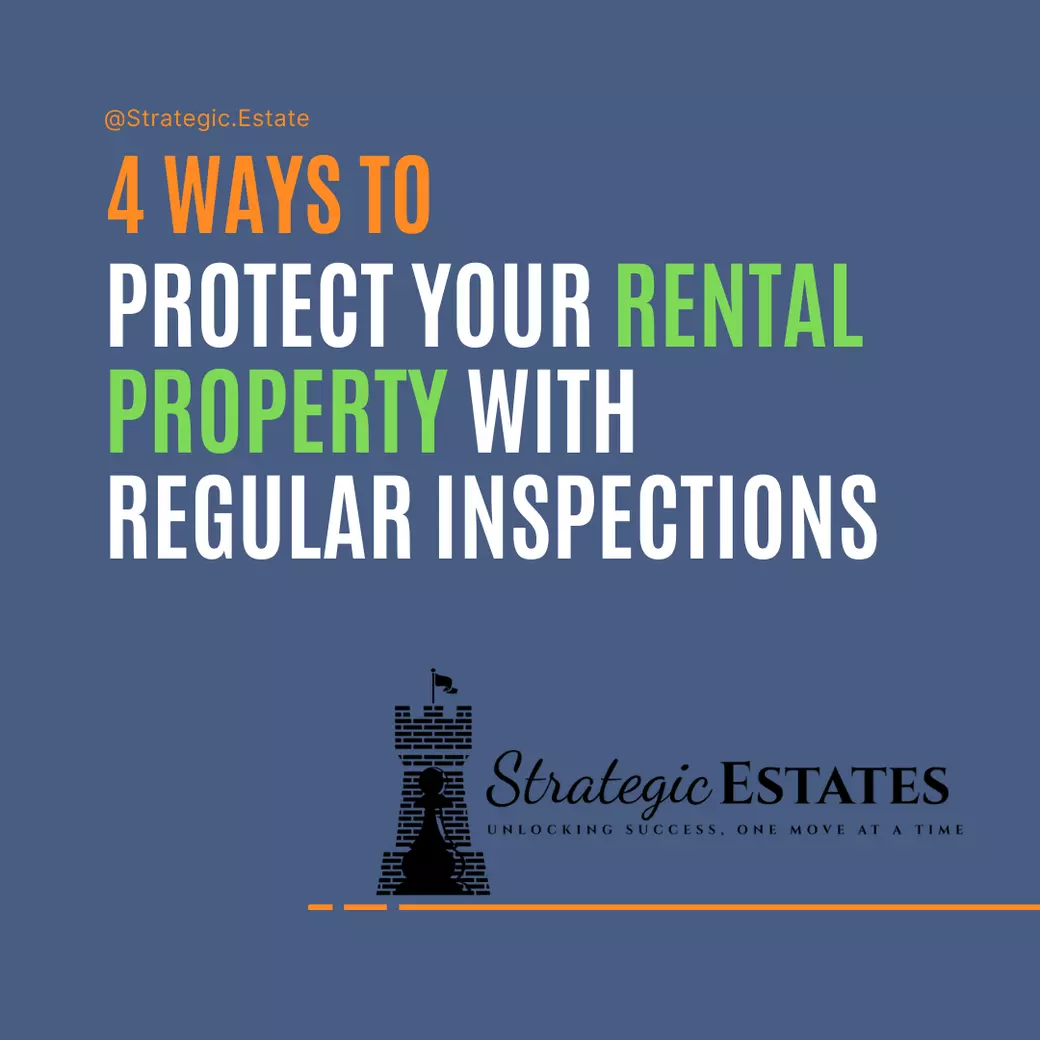Why Regular Property Inspections Are Essential for Landlords

Routine property inspections are a vital part of responsible property management. They help you identify maintenance needs, ensure tenant safety, and protect your investment. By conducting regular inspections, you can catch small issues before they become costly repairs, maintain a positive relationship with tenants, and ensure your property remains in top condition. Here’s why regular inspections matter and what to look for during each visit.
Interested in a step-by-step guide? Download our Rental Property Health Check here for an in-depth inspection checklist!
1. Catch Maintenance Issues Early
- Why It Matters: Small maintenance issues can quickly escalate if not addressed. Regular inspections allow you to identify minor problems, like leaky faucets or cracked windows, before they lead to more extensive and expensive repairs.
- What to Look For: Check for signs of water damage, test all appliances, inspect plumbing fixtures, and look for any wear and tear that may need attention.
- Pro Tip: Create a maintenance log during each inspection, noting any issues and their status. This helps you track recurring problems and plan for long-term repairs or upgrades.
2. Ensure Tenant Safety & Satisfaction
- Why It Matters: Inspections allow you to verify that the property meets safety standards and is free from hazards. Tenants feel more comfortable knowing their safety is a priority, which can lead to greater satisfaction and lease renewals.
- What to Look For: Check smoke detectors, carbon monoxide detectors, fire extinguishers, and ensure all exits are accessible. Look for any trip hazards or areas where mold or pests could be a problem.
- Pro Tip: Take a few minutes to ask tenants if they have any concerns about the property. This can help you address issues that might not be immediately visible and foster a positive relationship.
3. Prevent Costly Repairs Down the Road
- Why It Matters: Proactive inspections help you avoid surprise expenses by catching issues early. Regular maintenance saves you money in the long run by extending the life of key property features like roofing, plumbing, and HVAC systems.
- What to Look For: Inspect the roof for signs of wear, check the HVAC system, test all light fixtures, and ensure doors and windows are properly sealed. Pay close attention to areas that experience high wear and tear, like kitchens and bathrooms.
- Pro Tip: Schedule seasonal inspections focused on specific tasks, like checking the HVAC system in the fall and inspecting for water damage in the spring. This approach helps keep your property in good condition year-round.
4. Maintain Compliance with Local Laws
- Why It Matters: Many local laws require rental properties to meet certain safety and habitability standards. Regular inspections ensure your property remains compliant and reduces the risk of legal issues.
- What to Look For: Check that all safety features meet local regulations, such as railing heights, electrical outlets, and ventilation systems. Keep records of each inspection in case you need documentation for compliance purposes.
- Pro Tip: Stay up-to-date on local rental laws and building codes. Regularly review your inspection checklist to ensure it aligns with any new regulations or requirements.
5. Document Property Condition for Future Reference
- Why It Matters: Detailed inspection records provide valuable documentation of your property’s condition over time. This can be essential for resolving disputes, supporting insurance claims, and planning for future improvements.
- What to Look For: Take photos of each room and any areas where repairs or maintenance may be needed. Note the date of each inspection and include a summary of findings. This documentation can serve as a reference during tenant move-out inspections.
- Pro Tip: Use property management software to store inspection records digitally. This makes it easy to access past inspections, track maintenance trends, and create a thorough property history.
How to Conduct Effective Inspections
To maximize the benefits of regular property inspections, it’s important to have a structured approach. Here’s a quick guide:
- Create a Comprehensive Checklist
- Include everything from safety checks to aesthetic details. A checklist ensures you don’t miss anything and provides consistency across inspections.
- Schedule Inspections Periodically
- Conduct inspections at least twice a year, and consider additional seasonal inspections. Notify tenants in advance, following legal requirements for notice.
- Document Everything
- Take detailed notes and photos during each inspection. This documentation is essential for tracking the property’s condition over time and can help resolve disputes if they arise.
- Address Issues Promptly
- After the inspection, prioritize repairs and follow up with tenants on any concerns they raised. Prompt attention to maintenance needs demonstrates your commitment to the property and tenant satisfaction.
- Use the Opportunity to Communicate with Tenants
- Inspections are a great time to check in with tenants and reinforce open communication. Ask about their experience in the property and see if they have any maintenance requests.
Call to Action
Routine property inspections protect your investment, ensure tenant safety, and help you avoid costly surprises. Ready to streamline your inspection process? Download our Rental Property Health Check here for a detailed checklist that covers all the essential points of property upkeep.
Additional Resources
Categories
Recent Posts










